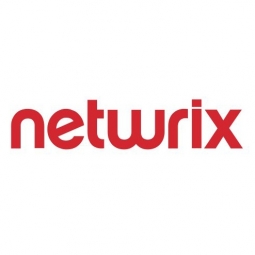Technology Category
- Analytics & Modeling - Machine Learning
- Cybersecurity & Privacy - Security Compliance
Applicable Industries
- Finance & Insurance
- National Security & Defense
Applicable Functions
- Quality Assurance
Use Cases
- Cybersecurity
- Tamper Detection
Services
- Cybersecurity Services
- System Integration
About The Customer
IDB Bank® is a private and commercial bank based in New York. It is licensed by the State of New York and a member of the Federal Deposit Insurance Corporation. Since its inception in 1949, IDB has expanded from its Manhattan headquarters to include branches across the United States. Today, it boasts over 1000+ employees and 9.229 billion USD in total assets. IDB Bank’s success is driven by their core mission – to aspire to be the best bank for their clients by putting their needs first, offering unwavering personal service, trusted relationships, and the expertise of their people. This mission is supported by the desire to continuously drive change and transformation to better serve their clients.
The Challenge
IDB Bank, a New York-based private and commercial bank, faced a significant challenge in securing customer data and ensuring compliance in an increasingly digital and threat-prone banking environment. The banking sector is a prime target for cybercriminals due to the sensitive and valuable data it holds. Any compromise to this data can severely impact a bank's reputation and customer loyalty. The emergence of progressive digital technologies and their associated security risks further complicate data protection in the banking sector. David Smithers, CIO at IDB Bank, was tasked with transforming the organization into the 'bank of the future' over a five-year period. This transformation presented a major security challenge. To address this, IDB Bank conducted a thorough market and technical review to evaluate potential solutions in the System, File Integrity Monitoring, and Change Control space.
The Solution
IDB Bank selected Netwrix Change Tracker to manage and secure their IT operations while protecting their customers' sensitive data. The SecureOps™ strategy of Netwrix Change Tracker combines essential security controls as prescribed by leading security frameworks such as the Centre of Internet Security (CIS) and National Institute of Standards and Technology (NIST), with the operational discipline of change management. The solution proved to be a great match for IDB Bank’s Linux and Windows IT environment and supports the bank’s 'Defense In-depth' strategy. It enables the bank to differentiate between good or bad changes and carry out forensic analysis as needed. With up to 1000 changes a week, Change Tracker helps detect bad changes, track hardening standards, and monitor and automate the CIS critical security controls. The solution's integration with ServiceNow validates approved changes with a full audit trail, enabling the bank to manage their digital transformation initiatives securely.
Operational Impact
Quantitative Benefit

Case Study missing?
Start adding your own!
Register with your work email and create a new case study profile for your business.
Related Case Studies.

Case Study
Real-time In-vehicle Monitoring
The telematic solution provides this vital premium-adjusting information. The solution also helps detect and deter vehicle or trailer theft – as soon as a theft occurs, monitoring personnel can alert the appropriate authorities, providing an exact location.“With more and more insurance companies and major fleet operators interested in monitoring driver behaviour on the grounds of road safety, efficient logistics and costs, the market for this type of device and associated e-business services is growing rapidly within Italy and the rest of Europe,” says Franco.“The insurance companies are especially interested in the pay-per-use and pay-as-you-drive applications while other organisations employ the technology for road user charging.”“One million vehicles in Italy currently carry such devices and forecasts indicate that the European market will increase tenfold by 2014.However, for our technology to work effectively, we needed a highly reliable wireless data network to carry the information between the vehicles and monitoring stations.”

Case Study
Safety First with Folksam
The competitiveness of the car insurance market is driving UBI growth as a means for insurance companies to differentiate their customer propositions as well as improving operational efficiency. An insurance model - usage-based insurance ("UBI") - offers possibilities for insurers to do more efficient market segmentation and accurate risk assessment and pricing. Insurers require an IoT solution for the purpose of data collection and performance analysis

Case Study
Data Capture for Afghanistan Forces
Electronic equipments on the field of Afghanistan provided information on the status of the vehicle and to identify potential threats surrounding it to the British Force. The monitoring and interpretation of this data requires robust and sophisticated digitization for data capture and communication.

Case Study
Smooth Transition to Energy Savings
The building was equipped with four end-of-life Trane water cooled chillers, located in the basement. Johnson Controls installed four York water cooled centrifugal chillers with unit mounted variable speed drives and a total installed cooling capacity of 6,8 MW. Each chiller has a capacity of 1,6 MW (variable to 1.9MW depending upon condenser water temperatures). Johnson Controls needed to design the equipment in such way that it would fit the dimensional constraints of the existing plant area and plant access route but also the specific performance requirements of the client. Morgan Stanley required the chiller plant to match the building load profile, turn down to match the low load requirement when needed and provide an improvement in the Energy Efficiency Ratio across the entire operating range. Other requirements were a reduction in the chiller noise level to improve the working environment in the plant room and a wide operating envelope coupled with intelligent controls to allow possible variation in both flow rate and temperature. The latter was needed to leverage increased capacity from a reduced number of machines during the different installation phases and allow future enhancement to a variable primary flow system.

Case Study
Automated Pallet Labeling Solution for SPR Packaging
SPR Packaging, an American supplier of packaging solutions, was in search of an automated pallet labeling solution that could meet their immediate and future needs. They aimed to equip their lines with automatic printer applicators, but also required a solution that could interface with their accounting software. The challenge was to find a system that could read a 2D code on pallets at the stretch wrapper, track the pallet, and flag any pallets with unread barcodes for inspection. The pallets could be single or double stacked, and the system needed to be able to differentiate between the two. SPR Packaging sought a system integrator with extensive experience in advanced printing and tracking solutions to provide a complete traceability system.

Case Study
Transforming insurance pricing while improving driver safety
The Internet of Things (IoT) is revolutionizing the car insurance industry on a scale not seen since the introduction of the car itself. For decades, premiums have been calculated using proxy-based risk assessment models and historical data. Today, a growing number of innovative companies such as Quebec-based Industrielle Alliance are moving to usage-based insurance (UBI) models, driven by the advancement of telematics technologies and smart tracking devices.







